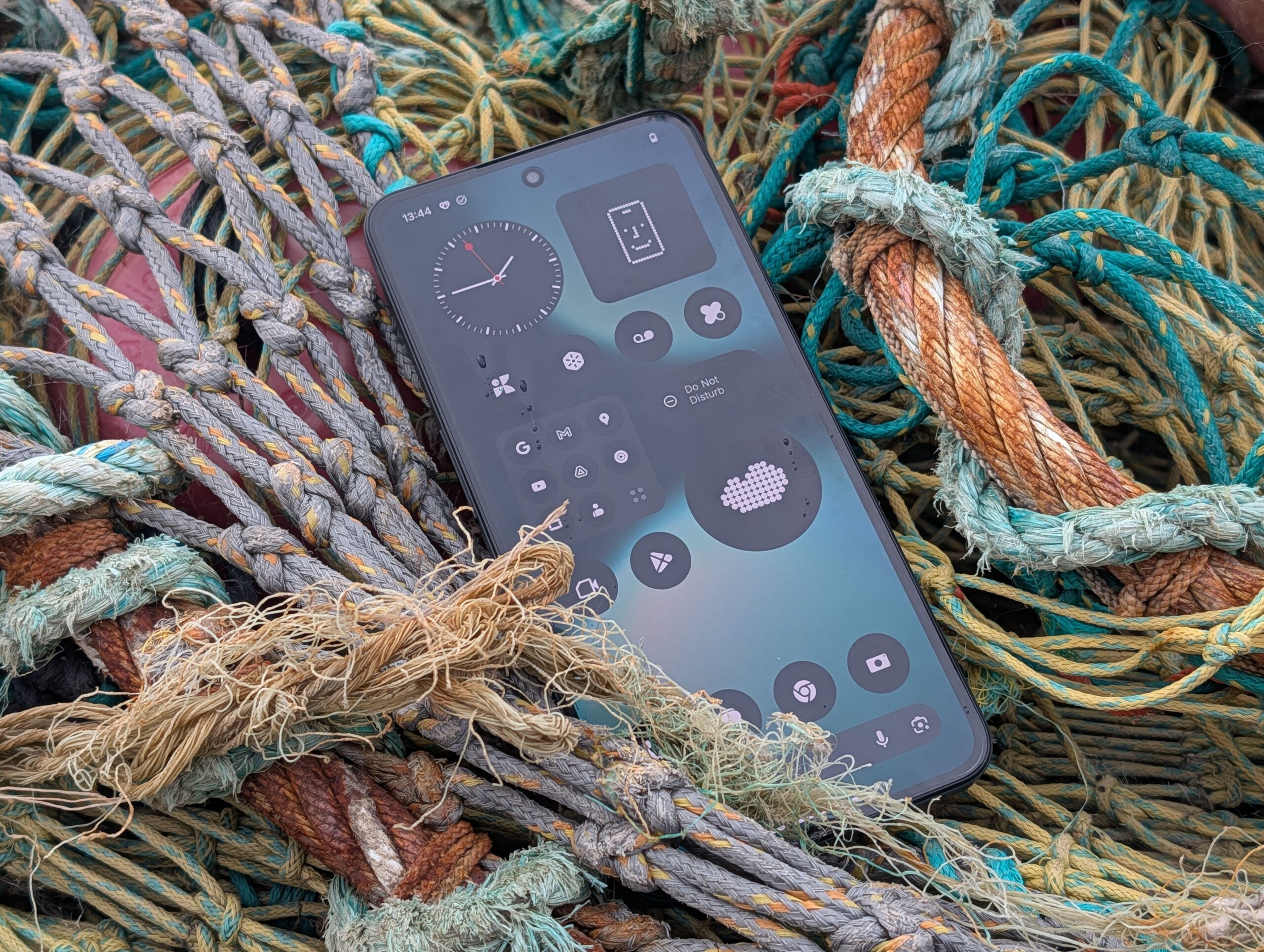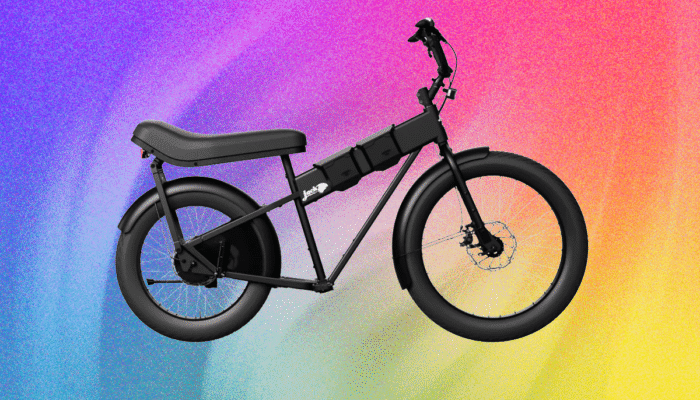Nothing injected a little intrigue into the same-y parade of Android phones in recent years. The Nothing Phone (3), for example, has a refreshing aesthetic that looks nothing like the competition. Could the company distill its cool, minimal retro style into the budget £249 Nothing Phone (3a) Lite? Kind of, with some disappointing compromises.
There’s a lovely screen, good stamina, and a taste of Nothing’s style in the translucent back and quirky pixelated interface. Performance is on par with other cheap phones, and the camera is limited, but there are no glaring omissions. It’s by no means a bad phone, but Nothing has diluted what makes it special with bloatware, lockscreen ads, and a watered-down design. Also, this phone is not coming to the US.
Diluted Design

Photograph: Simon Hill
Nothing has made a name for itself with visually distinct phones that tie together quirky retro design in both hardware and software. You get glimpses of the phone’s internals, interesting LEDs, and a pleasingly elegant, customizable user interface on top of Android. The Nothing Phone (3a) Lite is immediately recognizable as part of the family. The transparent glass back shows a few screws and what looks like a battery with a subtle red highlight. It scores a lowly IP54 rating for water resistance, which I can confirm works fine for light rain.
The flat, plastic frame is comfortable to hold, and there are fairly chunky bezels around the screen, but the single LED on the bottom right is the first clue that Nothing has made compromises. I didn’t expect the circular Glyph Matrix display of the Phone (3), but even the Glyph lights of the regular Nothing Phone (3a) and (3a) Pro have been reduced to a single round LED. You can still customize it (flip the phone for light-only notifications and add ringtones for specific contacts), but it’s nowhere near as fun or cool as the other versions.
One hardware surprise that may delight some of you is the space for a microSD card on the flip side of the SIM card tray, so you can expand the 128 GB or 256 GB of internal storage, whichever variant you go for.

Photograph: Simon Hill
The pill-shaped Essential Key below the power button is a clever way to integrate AI. Press it and you can save what’s on your screen and add a text or voice note. You can also hold the button down to record voice notes if you have a great idea (monkey tennis, anyone?) and don’t want to forget it. Everything is saved in the Essential Space app (double-tap to access), where it’s analyzed by artificial intelligence to generate tasks and store memories. You can have these pop up on your home screen using the Essential Space widget. I found it very handy and more accessible for remembering stuff that I would usually stick in my Notes app.
The Nothing OS 3.5 software sits atop Android 15, and I’m a fan of the retro pixelated style. It feels slick, with some lovely animations, and there’s an interesting assortment of widgets and customization options. Nothing promises three Android version updates and six years of security patches, which is respectable for a budget phone.
Sadly, there are compromises on the software front, too. I was very disappointed to find bloatware creeping onto the phone (especially Facebook), because this is something the company made a point of avoiding in the past. But it gets worse with Lock Glimpse serving up a trashy buffet of wallpapers that link to articles on your lockscreen. I mostly saw interior design and recipe content before I jumped into the settings to toggle it off (at least you can turn it off).
Mixed Bag

Photograph: Simon Hill
Using the Nothing Phone (3a) Lite as my daily driver was a mixed experience. The 6.77-inch OLED screen is pretty good and offers up to a 120-Hz refresh rate. I had no issues with reading, messaging, YouTube videos, and some light gaming. If you want to play demanding games like Genshin Impact, this is not the phone for you. Just watch how you hold it to avoid blocking the tinny bottom-firing mono speaker. I’d suggest earbuds are a better bet.
The 5,000-mAh battery is ample for most days, and the Nothing Phone (3a) Lite could maybe even last two days of light use. You’ll have to plug in when it runs low (there’s no wireless charging), and the rate tops out at 33 watts. That’s not bad, enabling you to go from zero to 80 percent in less than an hour. There’s 5G, Wi-Fi 6, and Bluetooth 5.3 support, but expect the battery to drain much faster on 5G networks.
Where the MediaTek Dimensity 7300 Pro chipset and 8 GB of RAM really struggled for me was the camera. On several occasions, it took seconds to open, and I had to reboot the phone at one point to get the camera app to load at all. I encountered occasional lag on opening and switching apps, but the camera performance was jarring because general use feels relatively slick for a budget phone.
It doesn’t help that the camera system is disappointing. The main 50-megapixel shooter is capable, if a little slow, with a large-ish 1/1.57-inch sensor and an f/1.8 aperture that handles a range of scenarios quite well. But the 8-megapixel ultrawide is poor, and the 2-megapixel macro is a complete waste of time. Comparing a close-up with the macro and the main camera (see the flower photos) shows how useless it is. There’s a 16-megapixel shooter around front that’s fine for selfies and video calls.
You’d think a design-led company like Nothing would be more calculated in adding features that only add value. If the ultrawide and macro are only going to offer lackluster results, cut them and stick with a single, solid primary camera.
Photograph: Simon Hill
Nothing Phone (3a) Lite, main camera.
While it’s possible to get decent landscape shots, the camera tends to overexpose, moving subjects often appear blurry, and low-light performance is predictably ropey. There’s no color consistency between the cameras, with a noticeable pink tinge creeping into ultrawide shots, and the 2X zoom is just a crop. I always miss a proper telephoto lens when switching to a phone without one, and it’s far more useful than an ultrawide.
While folks who don’t take tons of photos might be content using the main camera, there’s a reason I’m calling it out. The biggest problem for the Nothing Phone (3a) Lite is the existence of the CMF Phone 2 Pro, the latest budget phone from Nothing’s sister brand. It’s almost identical but cheaper at £219 and with a far better camera system (50-MP main, 50-MP telephoto, and 8-MP ultrawide). I’m struggling to see why you would pick the Nothing Phone (3a) Lite over the CMF Phone 2 Pro.

Photograph: Simon Hill
Why is Nothing competing with itself? There’s already plentiful competition in this price bracket. The very similar OnePlus Nord CE5 is £229 right now. Xiaomi’s Poco X7 Pro has dropped to £219 and has a much faster processor for gamers. Motorola’s Moto G Power is down to £225 and has a headphone port, wireless charging, and an IP68 rating. The Nothing Phone (3a) Lite has the style to compete but lacks the substance to justify the extra outlay.
Ultimately, the Nothing Phone (3a) Lite is a competent phone, and I mostly had a fine time using it. I don’t really understand why it exists. If money is tight, buy the CMF Phone 2 Pro or one of the other phones I mentioned. If you can afford to spend a little more, stretch for the already discounted Nothing Phone (3a) (£319) and enjoy a proper Nothing experience.







